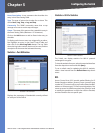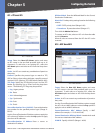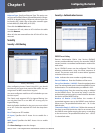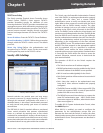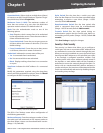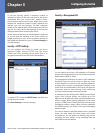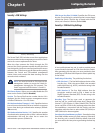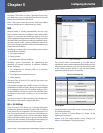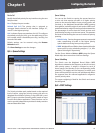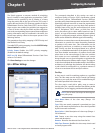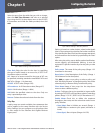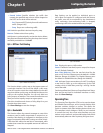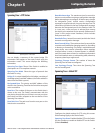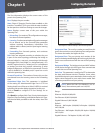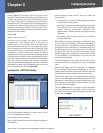
Chapter 5
Configuring the Switch
32
48-Port 10/100 + 4-Port Gigabit Switch with WebView and Power over Ethernet
Port to CoS
Modify the default priority for any interface using the text
field provided.
Port Displays the port number.
Default CoS (0-7) The priority that is assigned to
untagged frames received on the interface. (Range: 0-7,
where 7 is the highest priority)
LAG Indicates if ports are members of a LAG. To configure
the default priority for LAGs, go to the table entry for the
LAG number, which is listed after ports Gig 1 and Gig 2 at
the end of the table.
Default settings can be restored using the Restore
Defaults button.
Click Save Settings to save the changes.
QoS > Queue Settings
QoS > Queue Settings
The Switch prioritizes each packet based on the required
level of service, using four priority queues with strict or
Weighted Round Robin Queuing. It uses IEEE 802.1p and
802.1Q tags to prioritize incoming traffic based on input
from the end-station application. These functions can be
used to provide independent priorities for delay-sensitive
data and best-effort data.
Queue Settings
You can set the Switch to service the queues based on
a strict rule that requires all traffic in a higher priority
queue to be processed before lower priority queues are
serviced, or use Weighted Round-Robin (WRR) queuing
that specifies a relative weight of each queue. WRR uses a
predefined relative weight for each queue that determines
the percentage of service time the Switch services each
queue before moving on to the next queue. This prevents
the head-of-line blocking that can occur with strict priority
queuing.
Strict Priority Services the egress queues in sequential
order, transmitting all traffic in the higher priority
queues before servicing lower priority queues.
WRR Weighted Round-Robin shares bandwidth at the
egress ports by using scheduling weights 1, 2, 4, 8 for
queues 0 through 3 respectively.
Set the Queue Mode to Strict or WRR using the Queue
Mode drop-down menu then click Save Settings
Queue Scheduling
The Switch uses the Weighted Round Robin (WRR)
algorithm to determine the frequency at which it services
each priority queue. A weight is assigned to each of
these queues (and thereby to the corresponding traffic
priorities). This weight sets the frequency at which each
queue will be polled for service, and subsequently affects
the response time for software applications assigned a
specific priority value.
The queue weighting is fixed for the Switch and cannot
be configured.
QoS > DSCP Settings
QoS > DSCP Settings
•
•



